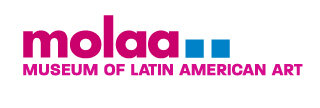Highlights of the MOLAA Collection
Ecofeminism: Judy Baca
Around the Matriarchal Mural and its symbols
Gabriela Urtiaga, Chief Curator, MOLAA
An essential figure in the Los Angeles art scene, Baca is a pioneer in creating art in communities. She has always been, and continues to be, searching for new alternatives to speak about those silenced and invisible themes in society, and therefore in the art world.
In 1981, Baca led a workshop for thirteen women, mostly of color, at the iconic Woman's Building in Los Angeles. With the goal of creating a mural, Baca proposed that each participant record images, ideas, and meanings from their dreams that in some ways are associated with the figure of the empowered woman.
The Matriarchal Mural: When God Was a Woman (1981/2021) is one of the fundamental works of her career. A long-term project, full of knowledge and experiences, that evokes the connection between social injustice and the exploitation of nature, as well as the dreamed rebirth of the empowered woman in connection with her environment, mother nature.
Matriarchal Mural is conceived in the possibility of searching for a new historical paradigm of universal creation. Baca thought of the great mural piece as a double-sided triptych with the same background container: the volcano that emerges from the earth, the fire god with mother nature as a symbol of femininity.
JUDITH F. BACA
(United States, 1946)
Matriarchal Mural: When God Was A Woman, 1980 - 2021
Double Sided Triptych:
The Birth of the Vision of the Heart (Side 2)
and
Thirteen Women in the Volcanic Eruption (Side 1)
Acrylic on wood panels
8 x 12 feet
(96 x 144 inches / 244 x 366 cm)
MOLAA Permanent Collection. Museum purchase from the Lynne Okon Scholnick Acquisitions Fund
M.2019.028
Collaborators:
2021 Painting Assistants: Martha Ramírez-Oropeza, Gina León
1980s: Julie Ruelas and Yreina Cervantez, plus 10 additional women
BIOGRAPHY
Judy Baca
One of America’s leading visual artists Dr. Judith F. Baca has been creating public art for four decades. Powerful in size and subject matter, Baca’s murals bring art to where people live and work. In 1974, Baca founded the City of Los Angeles’ first mural program, which produced over 400 murals and employed thousands of local participants, and evolved into an arts organization known as the Social and Public Art Resource Center (SPARC). She continues to serve as SPARC’S artistic director and focuses her creative energy in the UCLA@SPARC Digital/ Mural Lab, employing digital technology to promote social justice and participatory public arts projects. She is an emeritus Professor of the University of California Los Angeles, where she was a senior professor in Studio Art 1980-1996 at the University of California, Irvine and Chicana/o Studies and World Art and Cultures Departments from 1996 until 2018.
Beginning with the awareness that the land has memory, she creates art that is shaped by an interactive relationship of history, people and place. Baca’s public artworks focus on revealing and reconciling diverse peoples’ struggles for their rights and affirm the connections of each community to place. She gives form to monuments that rise up out of neighborhoods. Together with the people who live there, they co-create monumental public art places that become “sites of public memory.” Baca has stood for art in service of equity for all people. Her public arts initiatives reflect the lives and concerns of populations that have been historically disenfranchised, including women, the working poor, youth, the elderly and immigrant communities, throughout Los Angeles and increasingly in national and international venues.
Her most well-known work is The Great Wall of Los Angeles. It is located in San Fernando Valley, the mural spans half a mile and still is a work in progress engaging another generation of youth. The mural-making process exemplified community involvement, employing more than 400 youth and their families from diverse social and economic backgrounds, artists, oral historians and scholars. In 2017, The Great Wall of Los Angeles received national recognition on the National Registry of Historic Places by the US Department of the Interior. In 2012, the Los Angeles Unified School District named a school after her called the Judith F. Baca Arts Academy, located in Watts, her birthplace. She is a recipient of the Guggenheim Fellowship, the United States Artist Rockefeller Fellowship.





